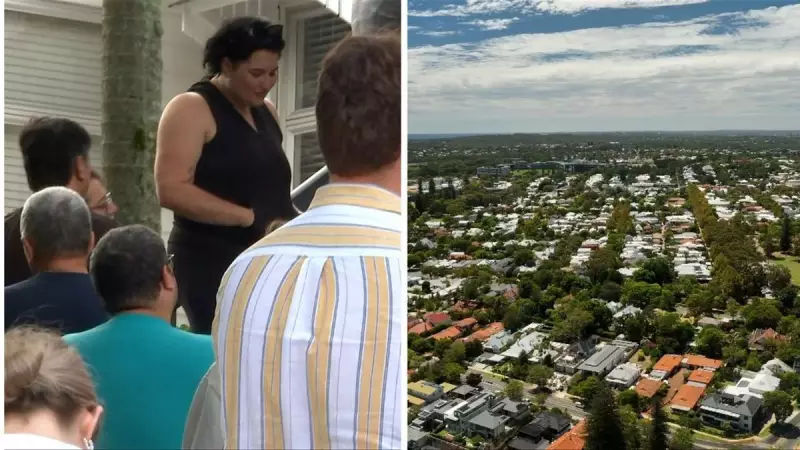
The severity of Australia's rental crisis has been exposed in a new report that shows Perth maintaining its position as the nation's most expensive capital city for tenants. According to the latest Rental Affordability Index, households in Western Australia's capital are spending an alarming 32 percent of their income on rent alone.
Perth's Disturbing Rental Reality
The data reveals that Perth's median weekly rental price has reached $700, pushing affordability to concerning levels. The city has experienced a 4 percent decline in rental affordability compared to last year's already record-low levels. This makes Perth's rental market even more challenging than Sydney and Adelaide, where median rents consume 30 percent of household budgets.
Ellen Witte, principal at SGS Economics and Planning, highlighted the dramatic transformation in Perth's rental landscape. "Since 2020, rents in Perth have climbed by more than 90 percent, completely erasing the affordability gains made in previous years," she stated. The situation in regional Western Australia mirrors this trend, with areas once considered affordable now slipping into moderately unaffordable territory.
National Housing Stress Reaches Critical Levels
When households dedicate more than 30 percent of their income to housing costs, they enter what experts define as housing stress. This financial pressure directly impacts their ability to cover essential expenses including food, utilities, healthcare, education, and transportation.
The report, jointly prepared by SGS Economics and Planning and National Shelter, indicates that average rental households in all capital cities except the ACT now face unaffordable to moderately unaffordable rents at median rates. The document notes that low-to-medium-income households have been largely excluded from inner-city areas across all capitals, forcing them to outer suburbs where rental conditions remain challenging.
Kath Snell, Chief Executive of Shelter WA, emphasized that the housing crisis is no longer confined to low-income earners. "This housing crisis is no longer confined to those on the lowest incomes, it's climbing the ladder affecting working families," she warned.
Government Response and Proposed Solutions
On the same day the report was released, the WA government announced completion of its East Perth Common Ground project. The $70 million, 17-storey complex provides 112 self-contained apartments, with half reserved for people experiencing homelessness. The facility will feature comprehensive support services and on-site management.
However, advocates argue that more substantial measures are required. Snell called for ambition that matches the scale of the crisis, including:
- Additional 5,000 social and affordable homes per year
- Rent capping measures
- Regulation of short-stay rentals
- Elimination of no-grounds evictions
- Improved minimum housing standards
WA's Housing and Works Minister John Carey acknowledged the challenges, stating "we are throwing everything" at the issue while noting the state faces extraordinary population growth pressures.
Despite the grim outlook, National Shelter chair John Engeler identified some positive developments. For the first time in years, social and affordable housing stock appears to be increasing. He pointed to federal government initiatives including the Housing Australia Future Fund and commitments to a Better Deal for Renters at national cabinet.
The Housing Australia Future Fund has already begun delivering hundreds of homes, with thousands more in the pipeline that should alleviate pressure on the private rental market. Engeler stressed the importance of building on this momentum through expanded construction of build-to-rent housing.
Nevertheless, the scale of the challenge remains immense. Housing Australia estimated in 2021 that 44,500 social and affordable homes would need to be delivered annually over a 20-year period to address the shortfall, far exceeding the current federal government initiatives that deliver approximately 11,000 homes per year.
The economic implications extend beyond individual households. Robert Pradolin, executive director of Housing All Australians, highlighted how expensive rents are hampering business productivity nationwide. "From cafes and hotels to hospitals and childcare centres, businesses across Australia are struggling to find staff because there's nowhere affordable for them to live nearby," he explained.
The report concludes that building more social and affordable homes not only benefits struggling renters but also strengthens the broader economy. It recommends innovative partnerships with the private sector to deliver new affordable housing, given the limited government funds available.





